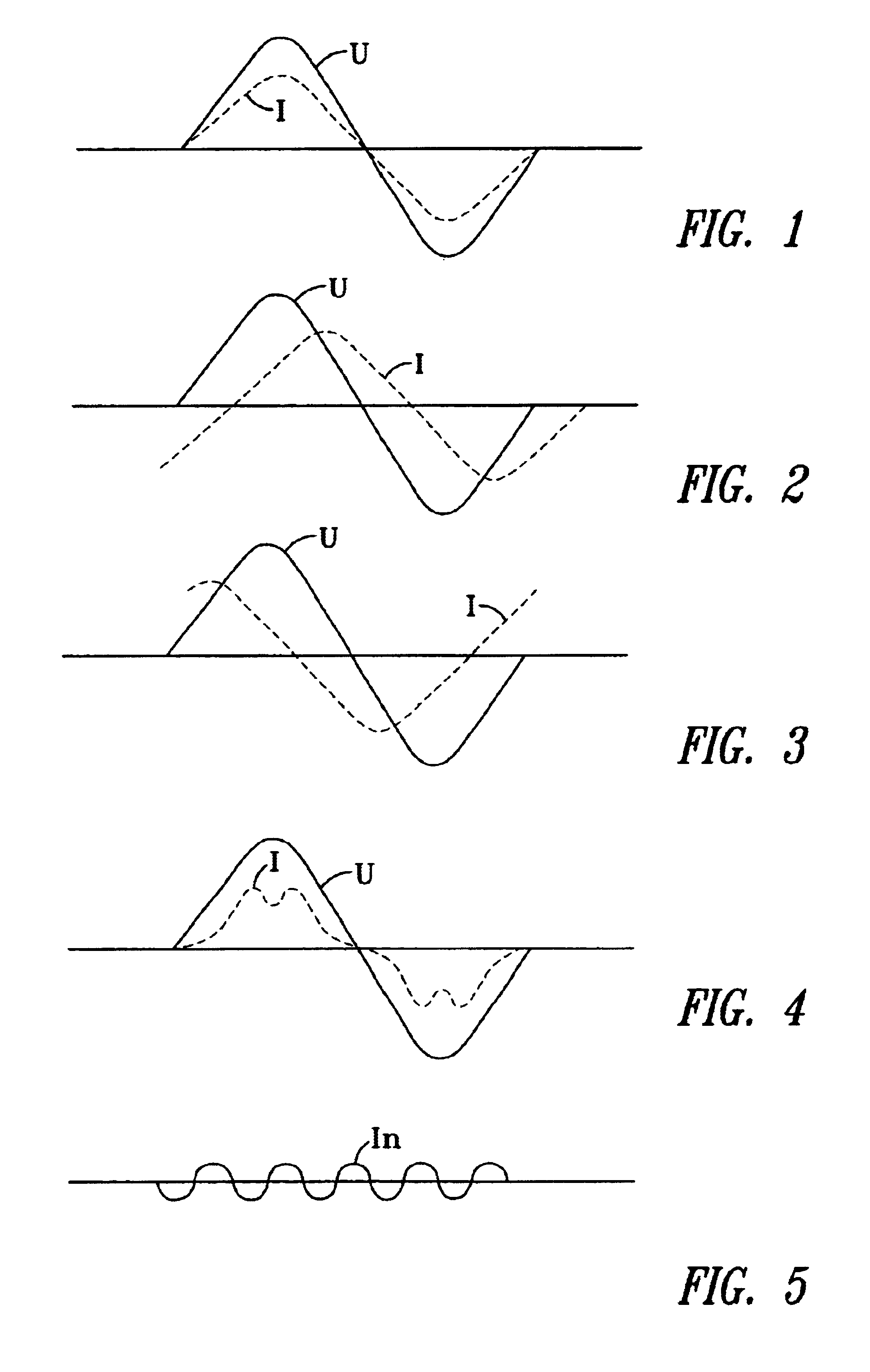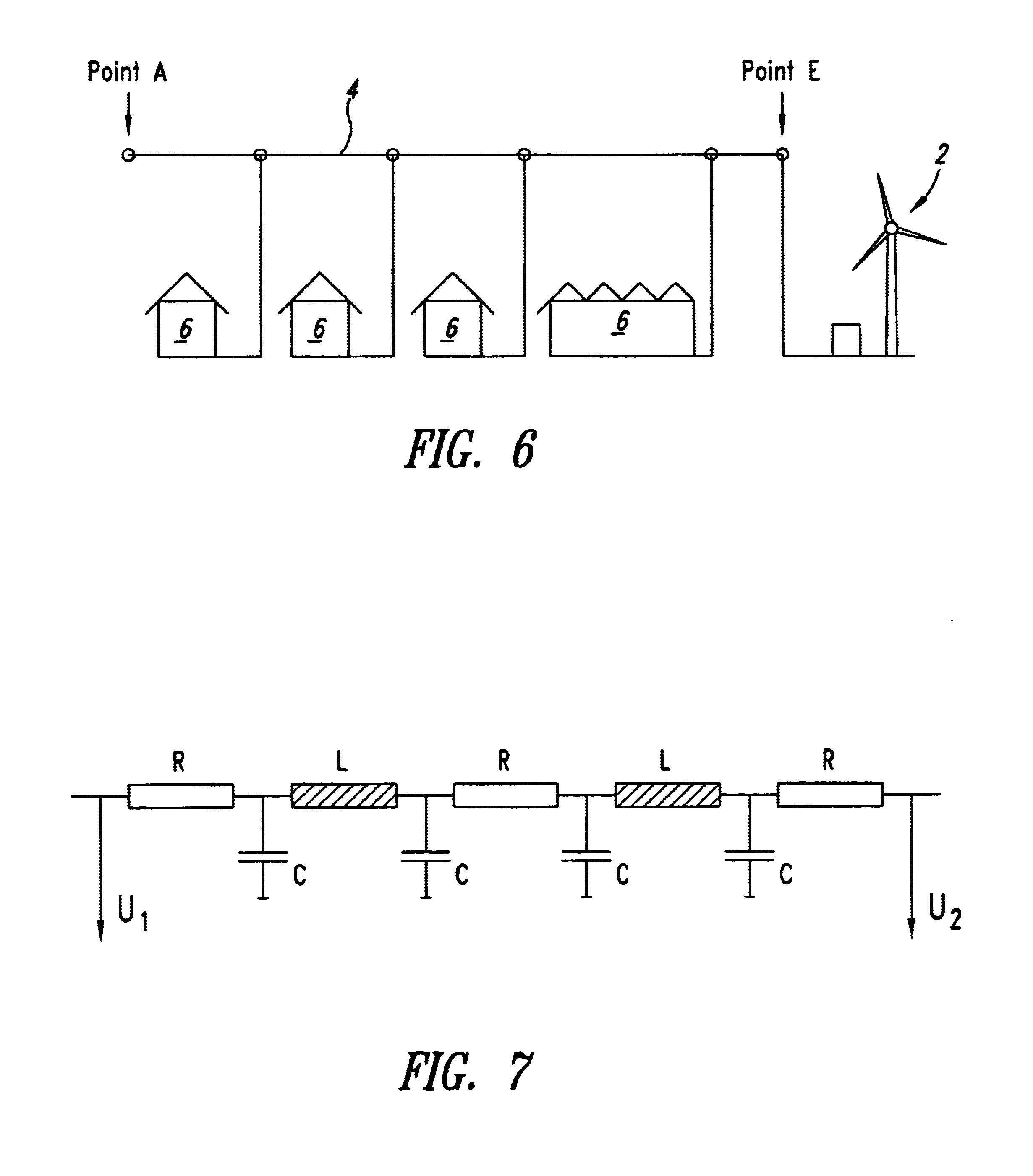Method of reactive power regulation and aparatus for producing electrical energy in an electrical network
a technology of reactive power regulation and electrical network, applied in the direction of reactive power adjustment/elimination/compensation, ac network to reduce harmonics/ripples, electric variable regulation, etc., can solve the problem of negative effect on the stability of the electrical network, inability to complete compensation of inductive reactive power through phase-shifting capacitors, etc. problem, to achieve the effect of easy adjustment or regulation
- Summary
- Abstract
- Description
- Claims
- Application Information
AI Technical Summary
Benefits of technology
Problems solved by technology
Method used
Image
Examples
Embodiment Construction
[0018]The occurrence of fundamental oscillation reactive powers in an electrical network has already long been known. FIGS. 1 to 3 show various voltage and current configurations.
[0019]FIG. 1 shows a situation in which there is no reactive power, that is to say voltage U and current 1 are not phase-shifted. The current neither leads nor trails the voltage. There is therefore no fundamental oscillation reactive power.
[0020]FIG. 2 shows the situation in which the current I trails the voltage U in respect of time. In this respect, inductive reactive power is required, which is the case with most electrical consumers as they—such as for example electric motors have inductors.
[0021]FIG. 3 shows the situation in which the current I leads the voltage U in respect of time. Capacitive reactive power is required in this case.
[0022]FIG. 4 shows an oscillation in the reactive power. FIG. 5 shows the harmonic component from the current configuration of FIG. 4.
[0023]FIG. 6 shows an arrangement in...
PUM
 Login to View More
Login to View More Abstract
Description
Claims
Application Information
 Login to View More
Login to View More - R&D
- Intellectual Property
- Life Sciences
- Materials
- Tech Scout
- Unparalleled Data Quality
- Higher Quality Content
- 60% Fewer Hallucinations
Browse by: Latest US Patents, China's latest patents, Technical Efficacy Thesaurus, Application Domain, Technology Topic, Popular Technical Reports.
© 2025 PatSnap. All rights reserved.Legal|Privacy policy|Modern Slavery Act Transparency Statement|Sitemap|About US| Contact US: help@patsnap.com



